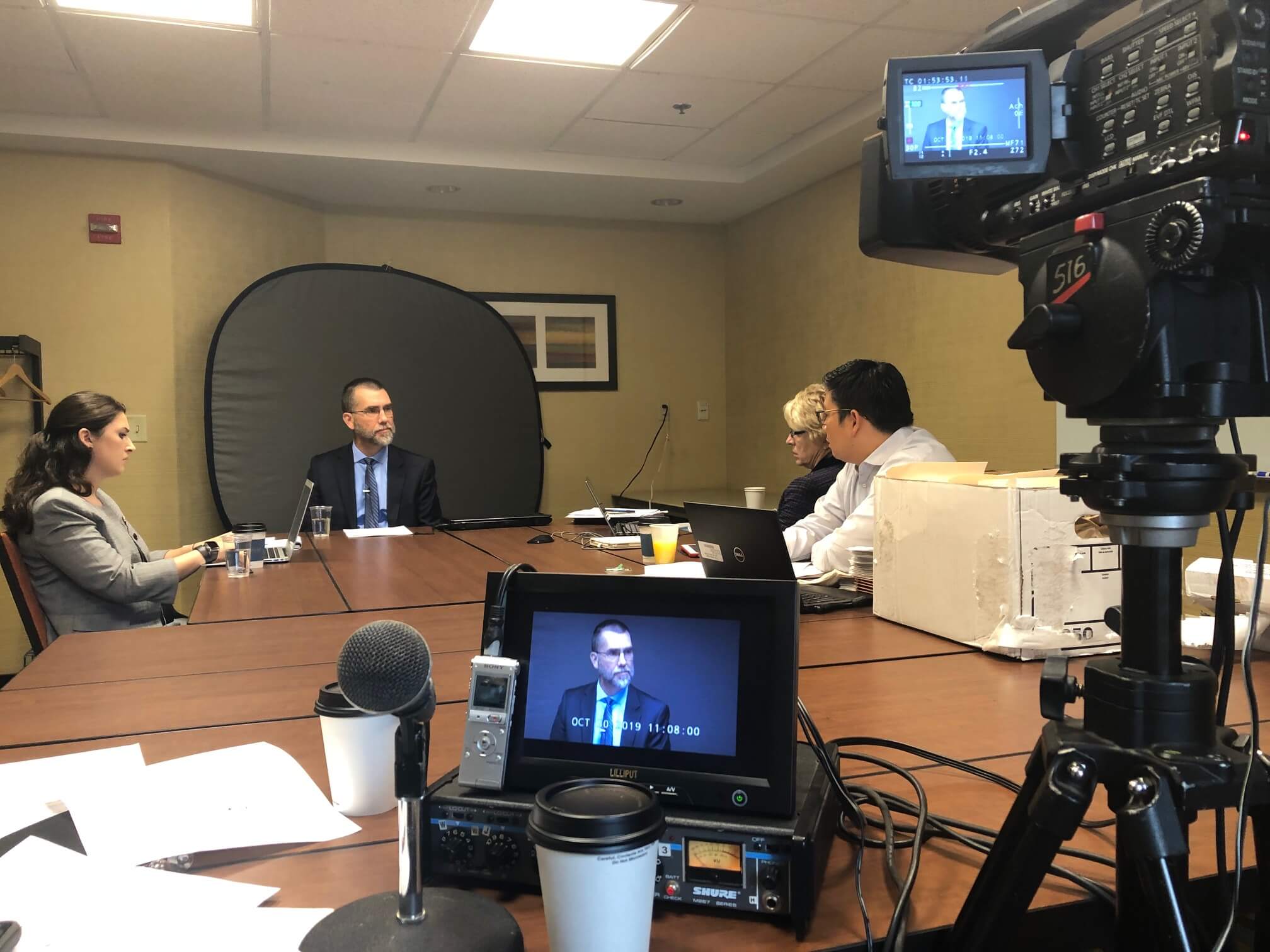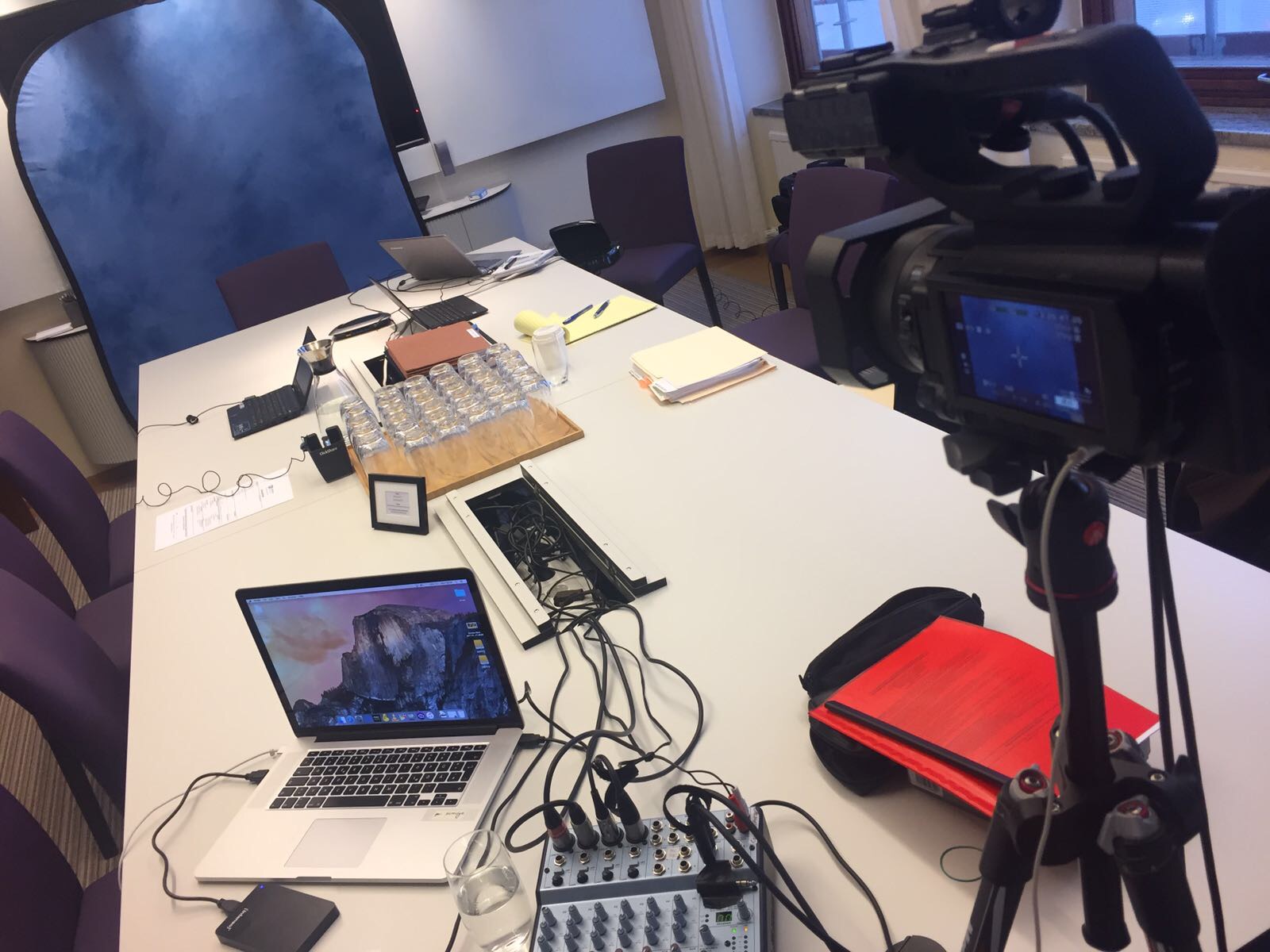Recognizing the Impact of Legal Videography on Instance Outcomes
Recognizing the Impact of Legal Videography on Instance Outcomes
Blog Article
Exploring the Devices of Lawful Videography: Unveiling Its Procedure in Safeguarding Genuine Visual Testament for Judicial Proceedings
In the world of judicial proceedings, the duty of legal videography stands as a cornerstone in protecting and providing visual evidence. As innovation remains to development, the systems behind legal videography have actually ended up being progressively elaborate, offering an essential layer of authenticity to statements recorded on video clip. By delving right into the functional complexities of legal videography, one can uncover the thorough processes that safeguard the honesty of aesthetic evidence provided in courtrooms - Legal Videography. This expedition not only clarifies the historic advancement of legal videography but likewise hints at the future patterns that may better revolutionize just how aesthetic testimonies are supported in the world of justice.
Historic Evolution of Legal Videography
Checking out the historical development of legal videography exposes a considerable makeover in the recording and discussion of visual proof within the lawful landscape. In the past, legal procedures greatly counted on composed transcripts and photos to record events and give evidence. With the arrival of video clip technology, the lawful industry experienced a standard change in exactly how aesthetic testament was caught and presented.
The advancement of legal videography can be mapped back to the late 20th century when improvements in video recording devices made it more accessible for use in courts. This technological advancement not only boosted the accuracy and reliability of aesthetic evidence however likewise transformed the means situations existed to discretionary (Legal Videography). Lawyers started to identify the persuasive power of video clip recordings in sharing feelings, nuances, and non-verbal signs that created photos or transcripts alone could not catch effectively

Innovation Improvements in Video Documents
What essential technical improvements have revolutionized video paperwork in the lawful area? The lawful area has seen considerable innovations in video clip paperwork technology that have boosted the credibility and integrity of aesthetic evidence in judicial proceedings. Among the essential improvements is high-def (HD) video clip recording capacities, which offer crystal-clear images and sharp information that are critical for accurately capturing testimonies, face expressions, and various other visual hints. In addition, the combination of timestamping and metadata features in video clip paperwork tools has made it possible for specific documentation of when and where the video clip was recorded, making certain the integrity of the evidence offered in court.
In addition, developments in video security and watermarking innovations have boosted the security and tamper-proof nature of video clip proof, protecting it versus unapproved changes or tampering. The introduction of cloud storage services and remote access capabilities has structured the storage, access, and sharing of video evidence, helping with seamless partnership among legal professionals and ensuring efficient access to essential visual testimonies when needed. These technological improvements in video clip documents have most certainly revolutionized the legal field, enhancing the accuracy, reliability, and admissibility of aesthetic proof in judicial process.
Duty of Lawful Videographers in Court Room Setups
The development of video clip documentation modern technology in the lawful area has actually required an important function for legal videographers in court room setups, making certain the stability and reliability of aesthetic testaments provided throughout judicial procedures. Legal videographers play a basic function in capturing and maintaining accurate aesthetic evidence that can be crucial in lawsuit. Their responsibility expands to establishing equipment, videotaping procedures, and generating discover this info here top notch videos that properly show the occasions in the court.
In court room settings, lawful videographers should comply with stringent standards and standards to keep the authenticity of the visual document. They should have a keen eye for detail and a thorough understanding of lawful treatments to guarantee that the video footage they capture is a real representation of the events that took place. Additionally, legal videographers usually work very closely with lawful teams to make sure that the video clip evidence aligns with the situation's needs and can be effectively provided in court to sustain the lawful arguments being made. In general, the duty of lawful videographers in courtroom settings is important in promoting the principles of justice and guaranteeing the openness of lawful process.

Ensuring Admissibility and Integrity of Video Clip Proof
To keep the reputation of aesthetic evidence provided in legal proceedings, making certain the admissibility and honesty of video clip proof is a crucial obligation for legal videographers. Admissibility describes the approval of evidence by the court, and for video proof to be acceptable, it has to satisfy particular criteria. Lawful videographers play a vital function in guaranteeing that the videos they record follow the policies of evidence, such as authenticity, significance, and dependability.
Integrity of video proof entails keeping the creativity and accuracy of the video from the time it is videotaped up until it is presented in court. This includes securely saving the video data, recording the chain of custodianship, and avoiding any meddling or changes. Legal videographers have to stick to stringent protocols to ensure the integrity of the video proof and prevent any type of challenges to its credibility.
Future Trends in Legal Videography
Offered the increasing reliance on modern technology in lawful procedures, legal videographers are poised to welcome ingenious innovations shaping the future of visual testimony capture and discussion. Among the prominent trends imminent is the combination of digital truth (VIRTUAL REALITY) learn the facts here now and increased fact (AR) innovations into legal videography. These modern technologies have the prospective to reinvent just how visual evidence is offered in court rooms, permitting courts and courts to immerse themselves in the scene of the criminal offense or incident.
Furthermore, making use of artificial knowledge (AI) formulas for video analysis is anticipated to streamline the procedure of assessing and examining huge quantities of video footage. AI can assist in identifying crucial moments, abnormalities, and patterns within video clips, enhancing the performance of legal examinations.

Conclusion
Finally, lawful videography has played an essential role in supplying authentic aesthetic proof for judicial proceedings. With technical improvements and the know-how of legal videographers, the stability and admissibility of video clip evidence are ensured in courtroom setups. As lawful videography proceeds to advance, it will certainly be important to copyright criteria that preserve the accuracy and dependability of visual statement for the future of lawful proceedings.
Taking a look at the historic progression of lawful videography discloses a significant improvement in the recording and presentation of visual evidence within the lawful landscape.The evolution of video clip paperwork modern technology in the legal field has necessitated a critical role for legal videographers in court setups, making certain the integrity and reliability of visual statements provided throughout judicial process. In addition, lawful videographers frequently work carefully with legal teams to guarantee that the video evidence aligns with the situation's demands and can be successfully provided in court to sustain the lawful disagreements being made.To preserve the credibility of visual proof offered in lawful process, making certain the admissibility and integrity of video clip proof is an essential duty for legal videographers. As lawful videography proceeds to advance, it will certainly be crucial to promote criteria that preserve the accuracy and reliability of visit this website aesthetic testament for the future of legal procedures.
Report this page